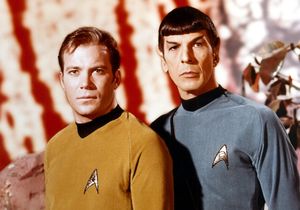| 86228 | humn 4460.01 | Online | Fall, 2019 |
Pratt & Star Trek
October 14–18
Goals:
|
This week, we look at two texts that consider alternate narratives and parallel worlds: Tim Pratt’s “Impossible Dreams” and the Star Trek episode “The City on the Edge of Forever.” How important is narrative in constructing our reality? Is history just a story to be changed? If so, what are the implications? What can we learn from seeing a story in another way? What responsibility to we have to the truth?
Wikipedia Work
Complete all reading and training on the WikiEdu dashboard under Week 10.
Read and View
Read and watch the two texts, taking notes as you do. Note character names, dominant themes, motifs, symbols, and important passages. Where do these important aspects of the text appear? After a first read, try to find at least one secondary text[1] that addresses these texts on the Internet or in Galileo.[2] You might also check YouTube. Read or watch the criticism and take notes.
Journal Post 14
Resources to review for journal posts: “Writing in the Liberal Arts”; “Writing Top Ten”; “Editor’s Checklist”; Adding a reference. Cite sources correctly using footnoted references, and link to Wikipedia entries in the text of your post.[3] |
Research and write about any aspect of either text, incorporating your initial research. Be sure to cite correctly and that you give your post a unique title and date.
Journal Post 15
Compare any aspect — character, theme, symbol — of the two texts. How do they complement each other? What does one say about the other? Is there a characteristic that both protagonists (antagonists) share? Your goal here is to find connections between the two texts. Again, be sure to support your ideas with at least one source, cited correctly. Date and title your post.
Reply
Reply to at least two different colleagues’ posts.
Due Date
Please have all of the above completed by Sunday, October 20, 2019. I will evaluate your this lesson the following day, email everyone a progress report, and post audio feedback at the top of the next lesson if necessary.
Tips:
|
Notes
- ↑ It would be helpful to begin with their respective Wikipedia entries that I linked above, but these should not be cited as sources.
- ↑ Obviously, the latter is better.
- ↑ External sources are always footnoted as references; Wikipedia entries are always just linked in the text. Never cite a Wikipedia article like you would an external source.
